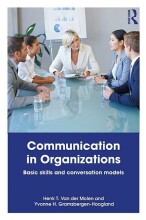Change and (unintended consequences) - Mantere & Schildt (2012) Reversal of strategic change
3 important questions on Change and (unintended consequences) - Mantere & Schildt (2012) Reversal of strategic change
Mantere & Schildt (2012) discuss four factors that predict the strength of sense giving and sense breaking residuals in change episodes (so it elaborates on four factors that influence sense making history). Elaborate on these four factors.
2. Extent of organizational sense breaking; limits possibilities to reconcile past and present
3. Extent of realized structural changes; people get hope when parts of the structural change are already realized. So, when they're able to e.g. Involve in some training program regarding the new strategy, they get hope and then its hard to let the schema go.
4. Succes of previous change - enhance commitment. When previous changes went well, people have trust and are committed. But when the management messed up in history, then you don't have trust and commitment anymore.
What is the difference between sense making and sense breaking?
Sensegiving is strengthening the new strategy you want to move to. This is the communication of management to staff of the new beliefs and meaning.
What is sense history and what is its role in the theory of Mantere & Schildt (2012)?
- Sense giving residuals; the influence of the past positive sensegiving of managerial change efforts.
- Sense breaking residuals; the influence of the past organizational sensebreaking on the acceptance of managerial change efforts.
So, its basically the memory of employees of previous senses of managerial communication.
The question on the page originate from the summary of the following study material:
- A unique study and practice tool
- Never study anything twice again
- Get the grades you hope for
- 100% sure, 100% understanding
































